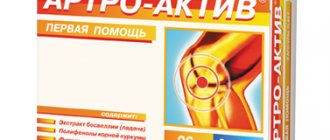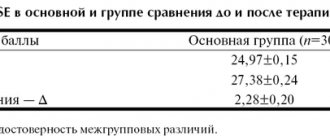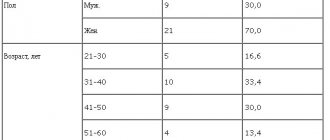The symptoms of colds and flu are familiar to many. They appear most often during autumn and winter colds. People struggle with these painful symptoms, such as headache, muscle aches, lacrimation, and runny nose with various means. Sometimes you have to combine several drugs. But “Rinza” contains several components that eliminate all of the listed symptoms at once.
Description and composition
The drug is a combination drug, containing several ingredients.
This:
- Paracetamol (500 mg);
- Caffeine (30 mg);
- Chlorphenamine maleate (2 mg);
- Phenylephrine hydrochloride (10 mg).
The drug is available in the form of tablets, ten pieces in a blister.
Paracetamol has an antipyretic and analgesic effect. Caffeine stimulates the nervous system and immunity, enhances the effect of paracetamol. Chlorphenamine maleate has an antihistamine effect. Phenylephrine hydrochloride constricts blood vessels, producing an anti-edematous effect.
The medicine has the following actions:
- antipyretic;
- painkillers;
- antiallergic;
- decongestant;
- psychostimulant.
RINZA® and RINZASIP® with vitamin C against fever and other symptoms of colds and flu
RINZA® tablets and powder for the preparation of RINZASIP® oral solution with vitamin C with paracetamol are combined preparations1,2. Each of them contains several active components that affect a different symptom of a cold or flu, and together eliminate the main symptoms. Adults and children over 15 years of age can take powder or tablets at fever. RINZASIP® for children is approved for use in children over 6 years of age7.
Paracetamol, which is included in both drugs (tablets and powder), helps fight high temperatures. It affects the pain and thermoregulation centers in the central nervous system. Paracetamol not only helps reduce fever during flu and colds, but also has an analgesic effect: helps reduce sore throat, headaches, and muscle pain.
Other active substances in the composition of antipyretic tablets RINZA® and powder for the preparation of oral solution RINZASIP® with vitamin C help eliminate other symptoms of influenza and other acute respiratory viral infections1,2.
Phenylephrine (not included in RINZASIP® for children) has a moderate vasoconstrictor effect1,2. Thanks to this, the product helps reduce redness and swelling of the mucous membranes of the nasopharynx and paranasal sinuses.
Pheniramine (chlorphenamine) provides an antiallergic effect1,2,7. Due to this, the drug helps eliminate itching in the nose, eyes and throat, swelling and redness of the mucous membranes of the nasal cavity, nasopharynx, paranasal sinuses, as well as runny nose and sneezing.
Ascorbic acid ( vitamin C )** takes part in the regulation of redox processes, blood clotting, carbohydrate metabolism, tissue regeneration, hormone synthesis; reduces vascular permeability and improves immunity2,7.
Thanks to this combination of paracetamol with other active ingredients, the preparations RINZA® and RINZASIP® with vitamin C help not only reduce fever, but also eliminate other symptoms of colds and flu (pain, swelling and redness of the mucous membrane, etc.)1,2.
Up to contents
The information in this article is for reference only and does not replace professional advice from a doctor. To make a diagnosis and prescribe treatment, consult a qualified specialist.
Literature
- Instructions for use of the drug RINZA®. Registration number: P N015798/01.
- Instructions for use of the drug RINZASip® with VITAMIN C. Registration number: LS-002579.
- N.G. Berdnikova. Combination therapy of acute respiratory viral infections from the perspective of a clinical pharmacologist. / Medical Council No. 6, 2021, p. 66-70.
- A.A. Zaitsev. Influenza and acute respiratory viral infections: rational symptomatic therapy. // Medicine. No. 3, 2021, p. 21-28.
- Delyagin V.M. Fever (new touches on an ancient painting). / Consilium Medicum, No. 2, 2021, p. 89–93.
- L.I. Kalyuzhnaya. Heat exchange disorders and fever // L.I. Kalyuzhnaya, D.A. Zemlyanoy / Pediatrician, volume VI, No. 1, 2015, p. 124-133.
- Instructions for use of the drug RINZA® for children. Registration number: LP-001821.
* In accordance with the instructions for use, the contents of 1 sachet (bag) must be poured with hot water and stirred until completely dissolved, resulting in a hot drink.
** Part of the RINZASIP® line of drugs.
What does Rinza treat?
The drug is prescribed for:
- cold;
- flu;
- ARVI;
- neuralgia;
- toothache;
- migraine;
- burns;
- traumatic pain;
- periodic female pain;
- acute sinusitis;
- rhinitis;
- pharyngitis.
The drug is used at the first signs of a cold (bone aches, headache, watery eyes). But it relieves nasal congestion quite well, thanks to its decongestant properties. Therefore, it is prescribed for rhinitis, sinusitis, and pharyngitis.
It is also sometimes used for burns, fractures, bruises, neuralgia, because it perfectly relieves pain.
How do medications to reduce fever work?
All antipyretics for adults and children are divided into 2 groups: non-steroidal anti-inflammatory drugs and analgesics-antipyretics (for example, paracetamol) 3,4,6. The mechanism of their effect on the body varies. These medications have analgesic, antipyretic and anti-inflammatory properties to varying degrees. The drugs affect the thermoregulation center in the brain, inhibiting the formation of prostaglandins - substances that cause high temperature3,4,6.
Let's look at the most common antipyretic drugs.
Paracetamol . It is a strong antipyretic and analgesic 3,4,6. It has been well studied and has long been used in clinical practice. Available in various dosage forms. With the correct dosage, paracetamol acts for 3–6 hours.
Ibuprofen . It is an antipyretic anti-inflammatory drug3,4,6. The effect of using the drug for fever may be less pronounced than that of paracetamol.
Acetylsalicylic acid
. Helps with fever, and is also used to reduce pain and inflammation, and can reduce blood clotting. Unlike paracetamol, it is not suitable for the treatment of children due to the high risk of side effects3,6.
All of these drugs with acetylsalicylic acid, ibuprofen, paracetamol and other active ingredients have contraindications; you should consult your doctor before taking them. If you cannot bring down a high temperature in an adult or child, call a therapist or an ambulance. In this case, a specialist should prescribe specific drugs after examining the patient.
Some of the most well-known folk remedies for helping with fever include the following.
Black currant
. In folk medicine, it is allowed to take both fresh berries and juice, and infusion of buds and leaves. The content of useful substances in decoctions and infusions is reduced due to heat treatment, so this treatment is ineffective, unlike the use of medications with paracetamol or other active substances.
Herbal infusions
. The most common antipyretic infusions and decoctions used at fever include linden flowers, chamomile, rose hips, plantain, coltsfoot. Whatever folk recipe you choose, you need to keep in mind that it is based on an approximate dosage of herbal components, so treatment with herbal remedies is rarely effective.
Honey
. To relieve fever and relieve other cold symptoms, it is used both in its usual form and with tea. Honey is an allergenic product; in addition, its beneficial properties are practically lost in hot water (the active substances are destroyed under the influence of high temperatures).
Lemon
. Consume fresh, juice mixed with water or warm tea with lemon. However, the actual content of vitamin C in lemon and other citrus fruits does not satisfy the daily requirement of the body fighting a cold.
Remember that the clinical effectiveness of folk remedies for reducing fever has not been proven!
Up to contents
Who should not take the drug
The medicine is contraindicated:
- with personal intolerance to substances;
- with severe renal failure;
- with liver failure;
- with Dubin-Johnson syndrome;
- for bronchial asthma;
- with severe hypertension;
- with severe atherosclerosis;
- for diabetes mellitus;
- for chronic lung diseases;
- with hyperthyroidism;
- for blood diseases;
- with anemia;
- with leukopenia;
- children under fifteen years of age;
- during pregnancy;
- for epilepsy;
- with prostate adenoma;
- with increased intraocular pressure;
- during lactation;
- with alcoholism;
- with sensitivity to xanthines.
Before starting treatment, you should definitely consult a doctor.
Side effects
Sometimes during treatment with the drug, unpleasant symptoms may occur:
- heartburn;
- stomach ache;
- nausea, vomiting;
- constipation or diarrhea;
- increased liver enzymes;
- drop in blood glucose levels;
- hypertension;
- tachycardia, bradycardia;
- arrhythmia;
- dyspnea;
- pain in the heart;
- noise in ears;
- dizziness;
- migraine;
- anxiety;
- sleep disturbance;
- increased excitability;
- kidney inflammation;
- painful urination;
- difficulty passing urine;
- anemia;
- thrombocytopenia;
- dilated pupils;
- increased intraocular pressure;
- allergic rash;
- anaphylactic shock;
- hives;
- itching;
- Quincke's edema;
- Stephen-Jones syndrome.
If such symptoms appear, you should immediately stop taking the drug and consult your doctor.
When to lower the temperature
In most cases, we want to quickly bring down the high temperature in order to alleviate our condition. However, it is not always necessary to take antipyretics with paracetamol or other active ingredients. In what cases it is worth resorting to the help of drugs depends on the severity of unpleasant symptoms, age, general health and, of course, thermometer readings3,4,5.
- Adults should drink antipyretics at a temperature of 38−38.5 °C.
- Children, pregnant women, people with chronic pathologies of the cardiovascular, nervous and respiratory systems may be recommended to lower the temperature even at lower values.
If, after taking an antipyretic drug, the temperature has dropped to normal or close to normal values (35.5–37.4 °C), then you should refrain from re-dosing tablets or powder based on paracetamol or other active substance. The recommended interval between taking the drug can be found in the instructions for use of the drug. In any case, it is recommended to wait until the temperature rises again.
But in some cases, even a slight fever should alert you:
- if it is accompanied by nausea, vomiting or severe headache;
- if, with an increase in temperature, convulsions have previously been observed or are observed;
- if you have chronic diseases4.
People with endocrine diseases, pathologies of the cardiovascular and circulatory systems need to be especially careful. They need to promptly bring down even a temperature that is not too high, after consulting with their doctor.
In addition, you can take an antipyretic for people who do not tolerate a fever well, even if the thermometer shows less than 38.5 °C4. To get rid of unpleasant symptoms, use suitable medications (for example, paracetamol). Remember that a doctor should select an antipyretic drug for high temperatures in adults and children4,6.
Up to contents
Overdose
If you accidentally or intentionally take too many tablets, you need to induce vomiting and take activated charcoal.
Overdose is expressed in the following manifestations:
- nausea;
- diarrhea;
- weakness;
- pale skin;
- pain under the right rib;
- increased sweating;
- yellowing of the whites of the eyes.
The analysis shows: high bilirubin, low prothrombin. If convulsions occur, you should take diazepam.
Sometimes fainting, heart failure and coma may occur.
Therefore, it is necessary to urgently call an ambulance.
Features of fever during influenza and ARVI
Almost all respiratory infections are, to one degree or another, accompanied by an increase in body temperature8. With a cold against the background of an acute respiratory viral infection, it rarely exceeds 380C, and the symptoms in most cases increase slowly2. For influenza, fever is the main symptom, which is accompanied by chills and severe symptoms of intoxication8 - body aches, weakness, headache5. Even with a mild form of influenza infection, the body temperature quickly rises to 38.50C, and with a severe form it exceeds 400C5.
Moderate fever helps the body mobilize forces to fight infection: it stimulates the immune system and inhibits the proliferation of viruses. However, when the number on the thermometer approaches 40oC, the fever becomes dangerous. The load on all organs and systems increases, especially on the heart and lungs9. Therefore, it is necessary to reduce the temperature without waiting for critical values 1.9:
- adults and children over 3 months old, when it reaches 39oC, or if the fever causes unpleasant symptoms;
- for children under 3 months at 38o (and sometimes lower than this), if the fever is poorly tolerated.
Emergency care and hospitalization are necessary if the following symptoms occur5:
- disturbance of consciousness (general agitation or lethargy);
- convulsions;
- cyanosis of the face;
- small spotty red rash on the skin or mucous membranes;
- hemoptysis or cough with “rusty” sputum;
- significant rise in body temperature, above 400C5.
Up to contents
Interaction
The drug should not be used together with other medications that contain phenylephrine, caffeine, or paracetamol. The medicine enhances the effect of beta blockers and MAO inhibitors. If taken together with antipsychotics and antidepressants, dry mouth and constipation may occur.
Paracetamol has a bad effect on the liver, especially if taken together with barbiturates, diphenin, carbamazepine, rifampicin. Barbiturates reduce the antipyretic effect of the drug. If you take Rinza together with guanthedine, your blood pressure may drop. And if you take Rinza and cardiac glycosides together, there is a risk of developing arthymia and heart attack.
Oral contraceptives enhance the effect of Rinza. If taken simultaneously with sedatives, their effect is reduced. Taking Rinza with nephrotoxic antibiotics is not recommended.
Why does the temperature rise
What does an increase in body temperature protect against? The most common causes of fever are bacteria and viruses – pathogens of infectious diseases3,6. They trigger the formation of special substances that affect the thermoregulation center in the brain. This exposure causes a feverish state. A hot environment is destructive to bacteria and viruses and prevents their reproduction. Thus, fever may be the first sign of the body's fight against infection3,6.
Up to contents





